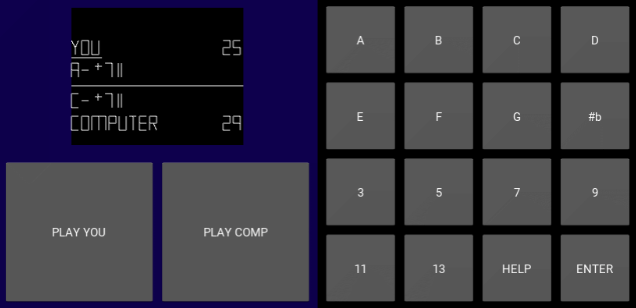Old Chess Computer Revived as a Jazz Player
From pawns to saxophone notes, this 1970s chess computer has been given a new life.

The time to jam with a computer has come. Entering its second stage of life, an old and dysfunctional chess computer was turned into a jazz computer.
The newly-created jazz computer competes against a human, who enters a jazz chord to match the last one the computer created.
Brought to life by Leo Neumann, who works at tonlichtstudio, a company that makes interactive music and light machines, the jazz computer is a perfect blend of retro style and new software.
SEE ALSO: THE QUEEN’S GAMBIT IS NETFLIX’S MOST POPULAR MINISERIES, SAYS THE COMPANY
Neumann was gifted the top section of the 1978 chess computer by his girlfriend a while back. It was a classic Chess Champion MK1 machine, and it no longer worked as the interior of it was no longer there, only the keyboard remained.

Neumann quickly forgot about it, until he recently had a conversation with a friend about converting trash objects into musical instruments. He then remembered his chess computer keyboard, which offered a perfect starting point.
The keyboard was easily reused as chess moves and musical chords can easily be intertwined. Only minor changes to the keypad’s stickers were added to refreshen its look.
Now for the system. Neumann integrated a Raspberry Pi Zero and a WM8960 audio amplifier with speakers for the hardware, and a larger LCD display.

In trying to keep with the original look of the chess computer, Neumann worked hard to find suitable outside parts that resembled the style. Using a 3D printer, he built a bottom case to the computer that would keep all the new parts inside, while still looking legit.
The trickiest part of his work was learning how to have a computer play matching jazz chords. In his own words, Neumann explained that “By abstracting away the interface I created a prototyping environment in Python with the really great PYO module for sound generation and the amazing Kivy UI framework.”
This enabled Neumann to try out different algorithms that could create chords and play in a game logic.

To create the most accurate jazz harmonics, Neumann said he, “opted for another data-driven approach: I played all combinations of two tetrads in all twelve keys (a couple of thousands!) to myself and rated them according to how well they progress.”
And voila! Now Neumann can jam with his new jazz computer to his heart’s content!
Jammin’ with the Jazz Champion from tonlichtstudio on Vimeo.
 SHOW COMMENT ()
SHOW COMMENT ()









